Abarth 500 595 695 vs Volvo V60 – Which one offers the better deal?
Everyday use, family trips or long-distance drives – here’s where the differences show.
Discover whether Abarth 500 595 695 or Volvo V60 fits your lifestyle better.
Costs and Efficiency:
When it comes to price and running costs, the biggest differences usually appear. This is often where you see which car fits your budget better in the long run.
Abarth 500 595 695 has a evident advantage in terms of price – it starts at 32600 £, while the Volvo V60 costs 41600 £. That’s a price difference of around 9086 £.
As for range, the Abarth 500 595 695 performs significantly better – achieving up to 265 km, about 173 km more than the Volvo V60.
Engine and Performance:
Power, torque and acceleration say a lot about how a car feels on the road. This is where you see which model delivers more driving dynamics.
When it comes to engine power, the Volvo V60 has a clearly edge – offering 455 HP compared to 155 HP. That’s roughly 300 HP more horsepower.
In acceleration from 0 to 100 km/h, the Volvo V60 is convincingly quicker – completing the sprint in 4.60 s, while the Abarth 500 595 695 takes 7 s. That’s about 2.40 s faster.
In terms of top speed, the Volvo V60 performs a bit better – reaching 180 km/h, while the Abarth 500 595 695 tops out at 155 km/h. The difference is around 25 km/h.
There’s also a difference in torque: Volvo V60 pulls clearly stronger with 709 Nm compared to 235 Nm. That’s about 474 Nm difference.
Space and Everyday Use:
Whether family car or daily driver – which one offers more room, flexibility and comfort?
Seats: Volvo V60 offers a bit more seating capacity – 5 vs 4.
In curb weight, Abarth 500 595 695 is clearly perceptible lighter – 1410 kg compared to 1734 kg. The difference is around 324 kg.
In terms of boot space, the Volvo V60 offers significantly more room – 519 L compared to 185 L. That’s a difference of about 334 L.
In maximum load capacity, the Volvo V60 performs convincingly better – up to 1431 L, which is about 881 L more than the Abarth 500 595 695.
When it comes to payload, Volvo V60 noticeable takes the win – 506 kg compared to 385 kg. That’s a difference of about 121 kg.
Who comes out on top?
Overall, the Volvo V60 shows itself to be wins the duel decisively and secures the title of DriveDuel Champion.
It convinces with the more balanced overall package and proves to be the more versatile choice for everyday use.
 @ Volvo Cars
@ Volvo Cars
Volvo V60
Abarth 500 595 695
The Abarth 500, particularly in its 595 and 695 renditions, captures the spirit of Italian motoring with its compact yet aggressive design. Known for its lively performance and distinctive styling, this little powerhouse is a joy to drive, offering an engaging experience that appeals to enthusiasts. With its rich motorsport heritage, the Abarth 500 embodies the essence of fun and excitement on both the streets and the race track.
details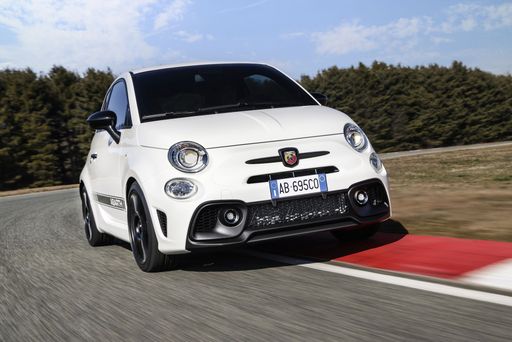 @ Abarth / Stellantis Media
@ Abarth / Stellantis Media
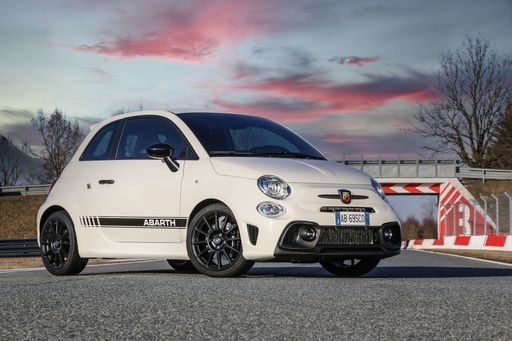 @ Abarth / Stellantis Media
@ Abarth / Stellantis Media
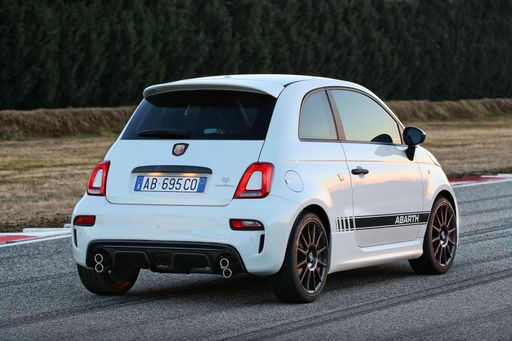 @ Abarth / Stellantis Media
@ Abarth / Stellantis Media
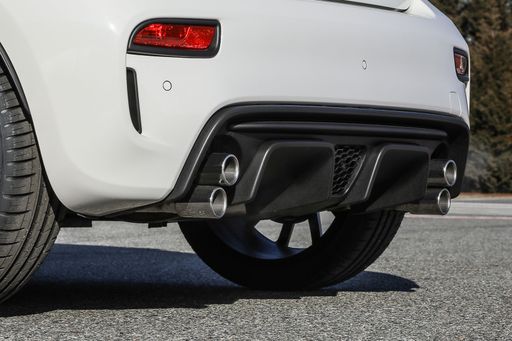 @ Abarth / Stellantis Media
@ Abarth / Stellantis Media
 @ Abarth / Stellantis Media
@ Abarth / Stellantis Media
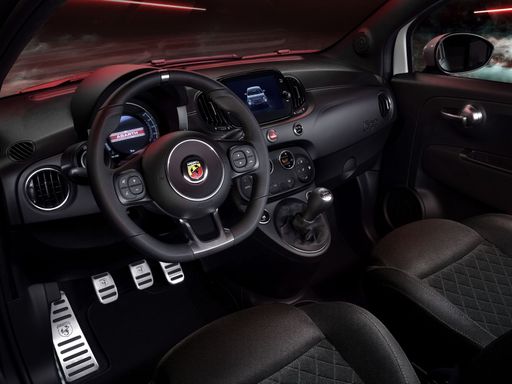 @ Abarth / Stellantis Media
@ Abarth / Stellantis Media
Volvo V60
The Volvo V60 exudes a sense of refined elegance with its sleek design and smooth contours, making it a standout in the estate car category. Inside, it offers a harmonious blend of luxury and functionality with premium materials and state-of-the-art technology, ensuring a comfortable driving experience. Its performance on the road is impressive, combining efficient handling with a powerful yet quiet ride, making it a favourite for those who appreciate both style and substance.
details @ Volvo Cars
@ Volvo Cars
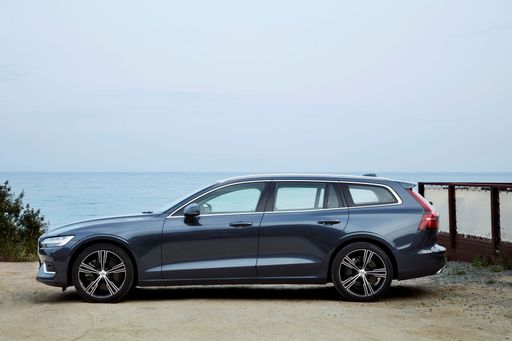 @ Volvo Cars
@ Volvo Cars
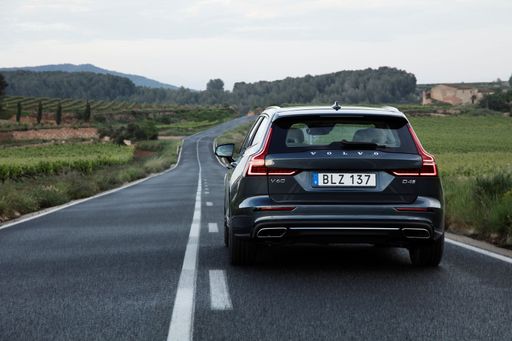 @ Volvo Cars
@ Volvo Cars
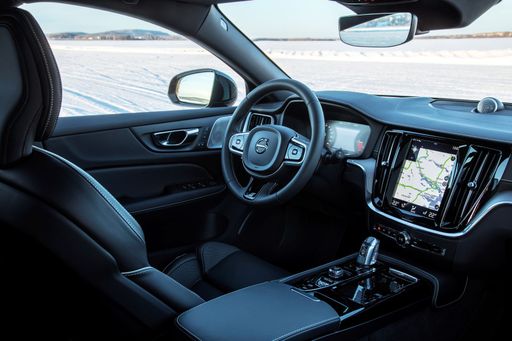 @ Volvo Cars
@ Volvo Cars
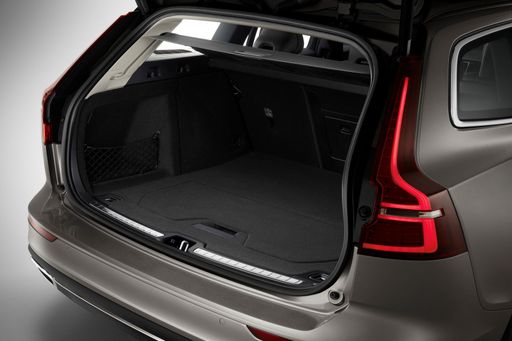 @ Volvo Cars
@ Volvo Cars
 @ Abarth / Stellantis Media
@ Abarth / Stellantis Media
|
 @ Volvo Cars
@ Volvo Cars
|
|
|
|
Costs and Consumption |
|
|---|---|
|
Price
32600 - 39400 £
|
Price
41600 - 64200 £
|
|
Consumption L/100km
-
|
Consumption L/100km
2.4 - 6.2 L
|
|
Consumption kWh/100km
17.1 - 18.8 kWh
|
Consumption kWh/100km
-
|
|
Electric Range
242 - 265 km
|
Electric Range
92 km
|
|
Battery Capacity
37.80 kWh
|
Battery Capacity
14.70 kWh
|
|
co2
0 g/km
|
co2
54 - 140 g/km
|
|
Fuel tank capacity
-
|
Fuel tank capacity
60 L
|
Dimensions and Body |
|
|---|---|
|
Body Type
Hatchback
|
Body Type
Estate
|
|
Seats
4
|
Seats
5
|
|
Doors
3
|
Doors
5
|
|
Curb weight
1410 - 1435 kg
|
Curb weight
1734 - 2064 kg
|
|
Trunk capacity
185 L
|
Trunk capacity
519 L
|
|
Length
3673 mm
|
Length
4778 mm
|
|
Width
1682 mm
|
Width
1850 mm
|
|
Height
1518 mm
|
Height
1432 mm
|
|
Max trunk capacity
550 L
|
Max trunk capacity
1431 L
|
|
Payload
370 - 385 kg
|
Payload
466 - 506 kg
|
Engine and Performance |
|
|---|---|
|
Engine Type
Electric
|
Engine Type
Petrol MHEV, Plugin Hybrid
|
|
Transmission
Automatic
|
Transmission
Automatic
|
|
Transmission Detail
-
|
Transmission Detail
Dual-Clutch Automatic, Automatic Gearbox
|
|
Drive Type
Front-Wheel Drive
|
Drive Type
Front-Wheel Drive, All-Wheel Drive
|
|
Power HP
155 HP
|
Power HP
197 - 455 HP
|
|
Acceleration 0-100km/h
7 s
|
Acceleration 0-100km/h
4.6 - 7.6 s
|
|
Max Speed
155 km/h
|
Max Speed
180 km/h
|
|
Torque
235 Nm
|
Torque
300 - 709 Nm
|
|
Number of Cylinders
-
|
Number of Cylinders
4
|
|
Power kW
114 kW
|
Power kW
145 - 335 kW
|
|
Engine capacity
-
|
Engine capacity
1969 cm3
|
General |
|
|---|---|
|
Model Year
2023
|
Model Year
2024 - 2025
|
|
CO2 Efficiency Class
A
|
CO2 Efficiency Class
E, B
|
|
Brand
Abarth
|
Brand
Volvo
|
Is the Abarth 500 595 695 offered with different drivetrains?
The Abarth 500 595 695 is offered with Front-Wheel Drive.
The prices and data displayed are estimates based on German list prices and may vary by country. This information is not legally binding.
